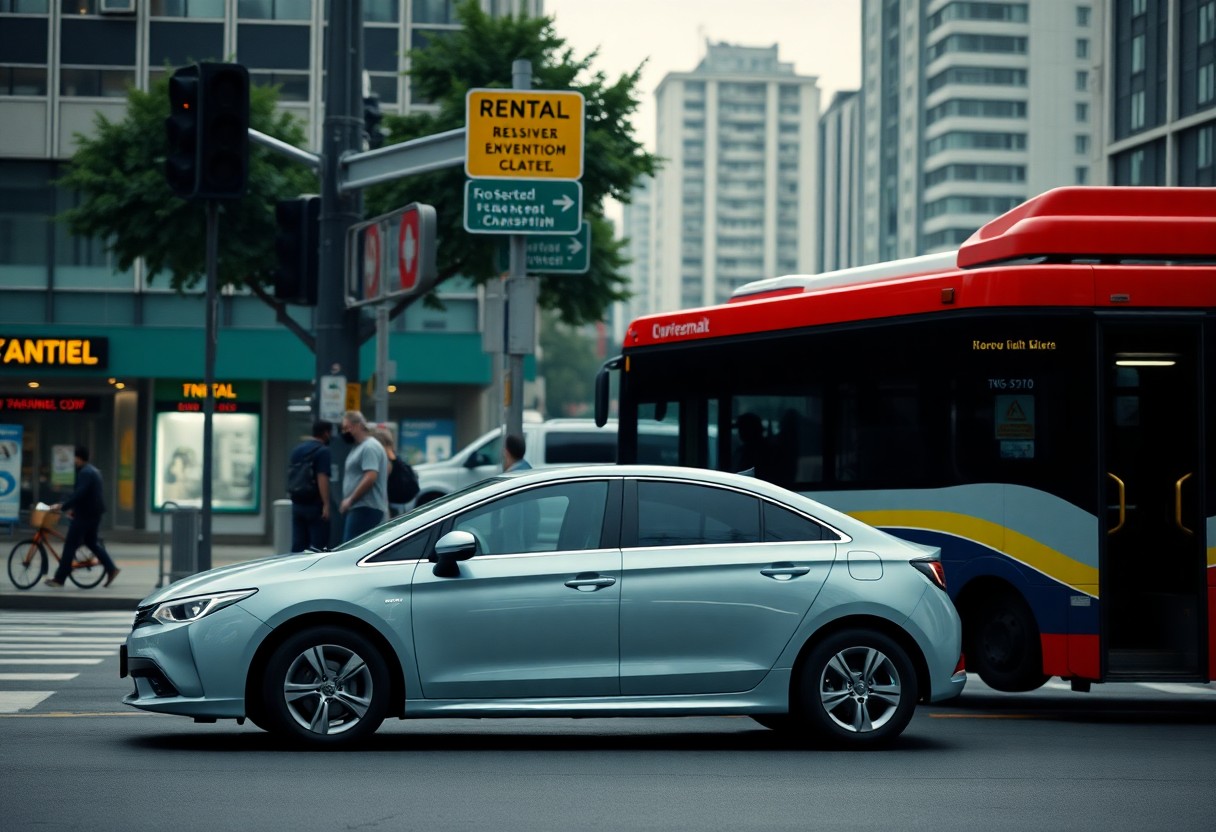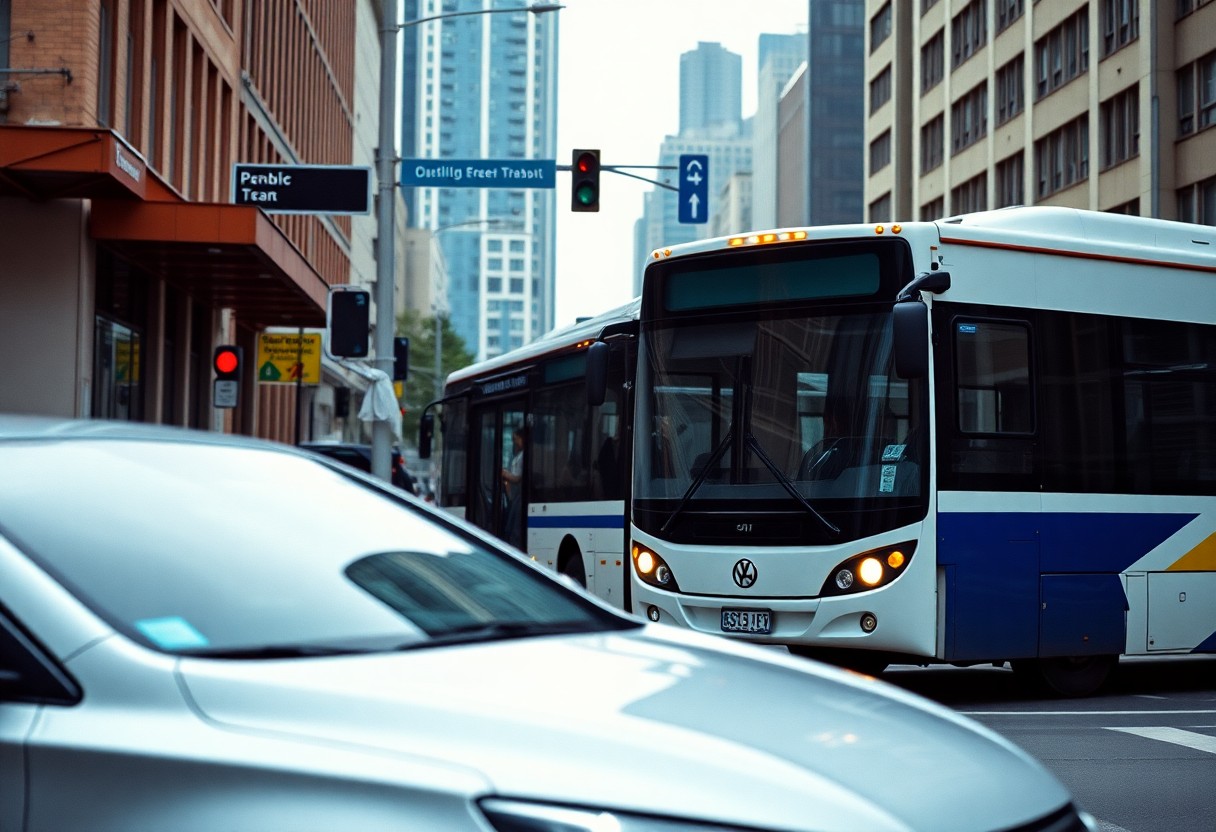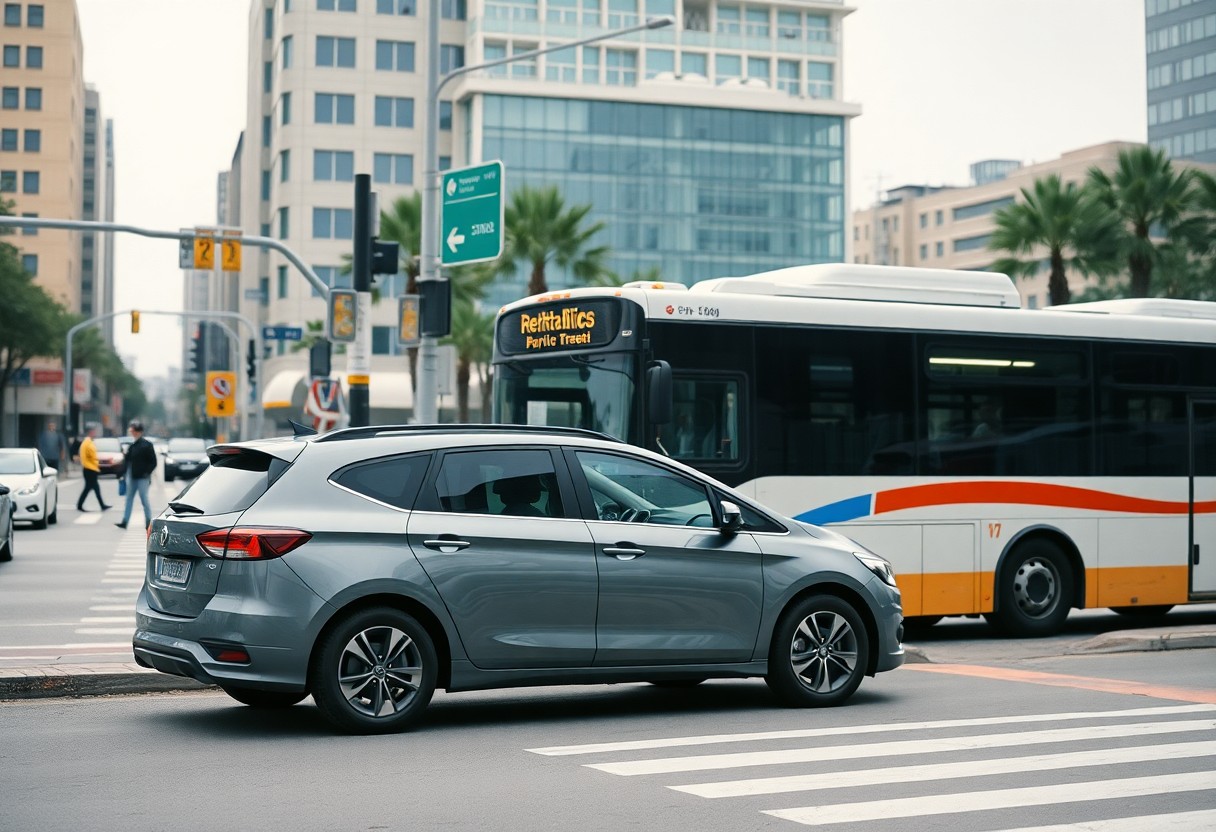As travel expenses continue to rise and personal time becomes increasingly valuable, selecting the most suitable transportation method for your journey is crucial. This decision impacts not only your financial budget but also the richness of your overall travel experience. When planning your next adventure, you will need to weigh the freedom offered by a rental car against the cost-effectiveness of public transportation. Your choice will be influenced by various factors including your travel destination, itinerary, and the number of companions. This comprehensive guide is designed to assist you in exploring vital considerations, from hidden rental fees to public transport accessibility, ensuring you make a well-informed choice tailored to your unique travel needs.
Discover the Unmatched Freedom of Renting a Car for Your Travels
The independence that comes with renting a car opens up a world of travel possibilities that are often inaccessible through public transport. By opting for a rental vehicle, you gain complete control over your itinerary, allowing you to explore off-the-beaten-path destinations that extend beyond typical tourist hotspots. Recent studies indicate that 73% of travelers prefer rental cars due to their flexibility, making this option particularly appealing for those who value autonomy in their travel experiences. With a rental car, you can craft your own adventure, making spontaneous stops wherever your heart desires, which greatly enhances the enjoyment and richness of your journey.
Evaluate the Advantages and Disadvantages of Renting a Car
Once you secure your rental vehicle, you will enjoy newfound freedoms but also encounter certain limitations. You can discover off-the-beaten-path locations and adjust your travel schedule at will, but it’s imperative to remain cognizant of potential parking fees, which can range from $25 to $45 daily in busy urban areas. Additionally, you may face navigation challenges in unfamiliar territories. While your rental car serves as a personal sanctuary, you will also be responsible for fuel costs and managing traffic, which can sometimes lead to stressful situations. Understanding these dynamics can help you maximize the benefits of your rental experience and ensure a smoother journey.
Identify Hidden Costs and Explore Unexpected Savings When Renting
While the freedom afforded by a rental car comes at a price, it can also unveil unforeseen financial advantages. Although initial rental fees might seem high, it is essential to recognize that traveling in a group can often be more economical compared to purchasing individual tickets for public transport. Recent statistics indicate that families of four or more typically save 15-20% on transportation costs when opting for a rental vehicle over public transit options, making it a smart choice for larger groups seeking to travel together.
Delving deeper into the financial implications, other considerations become significant. Insurance premiums may add $15-$30 daily to your rental expenses, but many credit card companies offer protection services for rental cars. Furthermore, the fuel efficiency of modern rental fleets, averaging around 30-35 MPG, can help keep overall costs down. The convenience of door-to-door travel not only saves time but also enhances your ability to enjoy your vacation without the complications of navigating public transport systems.

Navigate Public Transportation Efficiently for a Stress-Free Journey
If you opt to rely on public transportation, the first step is to familiarize yourself with the local transit system. Most major cities now feature user-friendly transit applications that assist you with route planning, real-time arrival tracking, and ticket purchases. Understanding the local transit network—including bus routes, subway lines, and transfer stations—is critical for a smooth travel experience. Research indicates that 55% of urban travelers save up to 30 minutes per trip by utilizing these transit applications, significantly improving their overall efficiency and enjoyment of the journey.
Master the Urban Public Transit System for Seamless Travel Experiences
Each city’s public transportation system possesses its own unique patterns and rhythms. Expect to encounter peak hours, typically between 7-9 AM and 4-6 PM, when crowds are at their highest. Therefore, integrating alternative routes into your travel strategy is wise, as delays are common during these busy times. Including a buffer of 15-20 minutes for important appointments will help ensure you arrive on time and alleviate stress associated with unexpected delays.
Immerse Yourself in the Cultural Dynamics of Public Transit
Beyond practical aspects, using public transportation offers a unique social experience. You will share the space with both locals and fellow travelers, enabling you to immerse yourself in the true essence of the city. While this can lead to occasional uncomfortable situations, it also provides rich cultural insights. Studies have shown that regular public transit users develop enhanced social skills as they navigate various social scenarios, making it a valuable component of urban travel.
At times, you may find yourself navigating through diverse social scenarios on public transport. From the bustling energy of rush hour to the quiet solitude of late-night rides, each moment presents its own atmosphere. Safety is especially important during off-peak hours, so it’s essential to remain vigilant and choose well-lit, populated areas for waiting. Most transit systems now include 24/7 security monitoring and emergency communication systems to ensure your safety while traveling.
Analyze the Financial Consequences of Your Transportation Choices
When weighing your travel options, budgeting plays a crucial role in determining whether to choose rental cars or public transport. Your transportation expenses can vary significantly based on your destination, trip duration, and the number of travelers. While rental cars provide greater flexibility, they also come with hidden costs such as insurance, fuel, and parking fees. Conversely, while public transit may initially seem cheaper, the cumulative costs of frequent daily rides can accumulate rapidly.
Detailing the True Costs Associated with Driving a Rental Car
An in-depth financial assessment of rental cars reveals expenses that extend well beyond the daily rental rate. You should anticipate $30-$50 daily for insurance, average fuel costs of $40-$60 per tank, and potential parking fees that can soar to $50 per day in major metropolitan areas. Consequently, your total daily travel expenses could easily range from $100-$200, making this option more appealing when traveling as a group, where costs can be shared among multiple individuals.
Unpacking the Cost Dynamics of Public Transit Tickets
At first glance, public transportation may appear to be the more economical choice. In cities like New York, where average metro cards cost $34 for unlimited weekly rides, substantial savings can be realized compared to rental car costs. Additionally, you will avoid additional expenses such as parking and fuel, making public transit particularly advantageous for solo travelers aiming to minimize expenditures.
Cost comparisons reveal that weekly public transport passes in many large cities range from $25-$40, offering unlimited rides. However, for families or groups of four or more, the total cost of multiple transit passes may surpass the expense of renting a car, especially when planning extensive daily travel or trips to areas where public transport options are limited.

Maximize Your Time Management for Efficient Travel
As you weigh the pros and cons of rental cars versus public transport, prioritizing your schedule is essential. A rental car allows for direct, point-to-point travel, potentially saving you up to 40% of your travel time compared to public transportation. Your time is invaluable—while public transport may present itself as a cost-saving option, it’s crucial to consider the hours spent waiting, transferring, and walking to and from stations, which can significantly reduce your overall travel efficiency.
Enjoy the Flexibility of Spontaneous Scheduling with a Rental Car
When it comes to time flexibility, a rental car grants you complete control over your departure and arrival times. You are liberated from the constraints of fixed transit schedules, allowing for spontaneous detours or last-minute changes to your plans. This level of freedom is invaluable when unexpected changes arise or when you discover hidden gems along your journey, enabling you to fully embrace the adventure without the pressure of adhering to a timetable.
Navigate the Complexities of Public Transport Timetables Effectively
One of the primary challenges associated with public transportation is the need to adhere to strict schedules. Studies indicate that 23% of urban buses fail to run on time during peak hours, which can disrupt your carefully laid plans. Your journey may involve multiple connections, and a delay in one service can create a domino effect, throwing your entire day off track.
To effectively navigate public transportation, it’s prudent to build in extra buffer time. Transport experts recommend adding 15-20 minutes to your projected travel time for each connection. During rush hours or special events, consider doubling these buffer times, as they can significantly affect the time available for your planned activities.
Evaluate the Environmental Impact of Your Transportation Decisions
When assessing your transportation options, it is vital to consider the environmental consequences of your choices. A single-occupancy rental car emits approximately 404 grams of CO2 per mile, while public transportation can reduce emissions by up to 45% per passenger. The decision to rent a car versus utilizing public transit creates a substantial environmental footprint that warrants your consideration.
Comprehending Your Carbon Footprint as an Eco-Conscious Traveler
Every mile you travel directly contributes to climate change and environmental degradation. A fully-loaded bus can replace the need for 50 cars on the road, leading to a substantial reduction in carbon emissions. Your trip in a rental car can produce 4-5 times more CO2 than the equivalent journey via bus or train, although opting for electric or hybrid rental options can significantly mitigate this impact.
Discover Eco-Friendly Transportation Alternatives for Sustainable Travel
Upon arriving at your destination, you’ll find a variety of environmentally friendly transportation options. Electric car rentals can reduce your carbon footprint by up to 50% compared to conventional vehicles. Additionally, many cities now feature hybrid buses and electric trams, making public transport an increasingly sustainable choice for eco-conscious travelers looking to minimize their environmental impact.
As a result, your environmental impact can vary significantly depending on your transportation choices. Consider adopting a mixed-method approach—rent an electric or hybrid vehicle for longer journeys while utilizing public transport in densely populated urban areas. Numerous rental agencies now offer green vehicle options, allowing you to enjoy mobility while reducing your ecological footprint.

Ensure Maximum Comfort During Your Travels with Personalized Choices
In contrast to public transportation, rental cars provide complete control over your comfort preferences. You can easily adjust the climate, seating arrangements, and audio settings to suit your personal tastes, creating an ideal travel environment tailored to your needs. This level of customization becomes particularly valuable during extreme weather conditions or lengthy journeys, where overall comfort can greatly enhance your overall travel experience.
Enjoy the Privilege of Personal Space in Rental Vehicles
One of the most significant advantages of renting a car is the guaranteed personal space it offers. You will not have to contend with crowded buses or trains, where personal space often shrinks to less than 4 square feet during peak travel times. Your rental car becomes a private oasis, allowing you to maintain full control over your travel environment and who shares it with you, ensuring a much more enjoyable journey.
Understanding the Varied Comfort Levels of Public Transportation
Comfort levels on public transit can fluctuate greatly due to factors beyond your control. During peak hours, you may find yourself squeezed in with 150-200 passengers in a single subway car, significantly diminishing your comfort. The experience may often involve standing for extended periods, especially during the average 38-minute commute in major cities.
During a typical rush-hour scenario on public transport, noise levels can peak at around 80-90 decibels, comparable to the sound of heavy city traffic. These conditions, compounded by unpredictable delays and service interruptions, can render your journey less enjoyable and more challenging, particularly when traveling with luggage or in a group.
Decide on the Best Transportation Option Based on Your Unique Travel Needs
Ultimately, your decision between renting a car and using public transport should reflect your specific travel requirements and personal preferences. If flexibility and comfort are your top priorities, especially when traveling with family or friends, a rental car typically provides the best value, even when considering the higher upfront costs. Conversely, public transportation can be an excellent option for budget-conscious solo travelers who prefer well-established routes in urban centers. It’s essential to analyze factors such as your destination, group size, planned activities, and budget. By thoroughly evaluating these elements against your personal preferences, you can select the transportation option that aligns best with your travel goals.
The Article: Renting a Car vs. Public Transport: Which is Best for Your Trip? appeared first on https://rentacar24.org/
The Article Renting a Car vs. Public Transport: Choose the Best Option for You Was Found On https://limitsofstrategy.com
The Article Renting a Car vs. Public Transport: Find Your Best Travel Option First Appeared ON
: https://ad4sc.com

Comments are closed